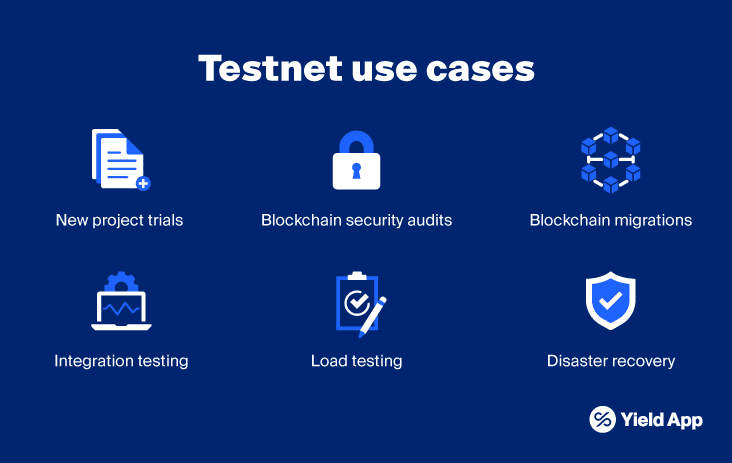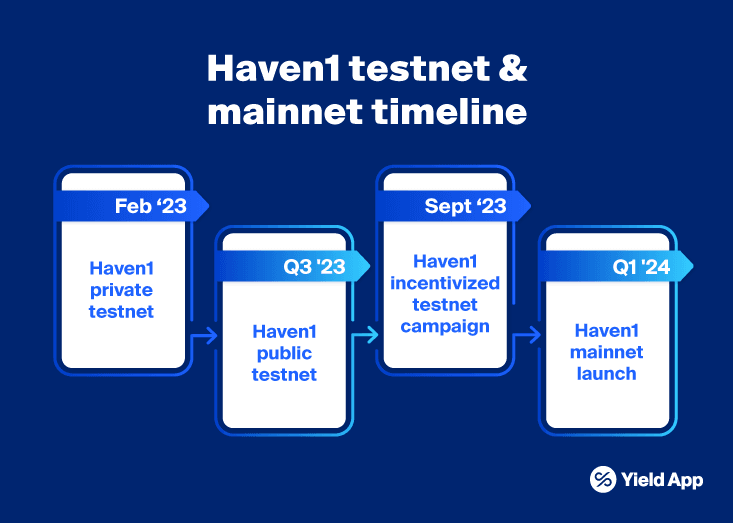Testnets and mainnets are the pillars of blockchain technology, which power the transformative landscape of Web3 development. Every budding crypto enthusiast should wrap their head around these concepts, mechanisms, and the different use cases.
By definition, every blockchain has a mainnet – the bustling, live network where all transactions are processed and permanently recorded on an immutable ledger. Meanwhile, a testnet (short for test network), serves as a sandbox for developers to trial new features before rolling them out on the mainnet.
Testnets - often the unsung heroes before a new blockchain launches - act as checkpoints to ensure the security and functionality of smart contracts, and identify errors, bugs and vulnerabilities. Essentially, they are carbon copies of the mainnet that operate as a fork, powered by test tokens that have no intrinsic value of their own. This setup provides developers with a cost-effective environment to take a new blockchain or feature for a test drive.
Haven1, an innovative Layer 1 blockchain incubated by Yield App, is already running a private testnet, open to a select number of participants, as part of its roadmap towards a full launch in 2024. In this piece, we highlight the differences between this trial environment and the final product, the advantages of testnets, and Haven1’s preliminary rollout plans.
Mainnet vs testnet: Preparing for liftoff
The mainnet is the foundation of any blockchain network, executing transactions via a consensus mechanism, such as Proof of Work (PoW) or Proof of Stake (PoS). However, delivering a secure and frictionless experience is no easy feat. Just like a pharmaceutical drug would undergo stringent testing before hitting the shelves, blockchain developers also put their code under the microscope, fine-tuning it through trial and error.
Testnets create a secure training ground for developers to push boundaries, experiment, and intentionally stress-test their creations. The best part is that whatever happens on the testnet, stays on the testnet, safeguarding the main network’s real assets and operations from possible hiccups during the testing phase.
Since testnets are simply replicas of the mainnet, they have no security infrastructure of their own. Instead, they mirror the security characteristics of the main blockchain, allowing developers to analyze its safety features.
Unlike mainnets, which require users to pay transaction fees denominated in the blockchain’s native token, test networks use test tokens with no economic worth. This eliminates the prohibitive costs of testing new projects and features directly on the mainnet.
The power of testnets
Testnets typically undergo numerous releases and technological upgrades before making their appearance on the mainnet. The first iteration is usually a private network, open to a limited number of users through personal invites. Restricting access keeps network congestion at bay, ensuring a smooth workflow for developers.
Once the initial trial is complete, a public testnet becomes available to the wider community, offering developers a chance to test the blockchain’s features on a greater scale. More testers mean a higher possibility of catching glitches and bugs - after all, two pairs of eyes are always better than one.
Testnets have a wide variety of use cases, from new project trials to blockchain security audits. Developers use test networks for everything from blockchain migrations, integration testing, load testing, and disaster recovery.

Haven1 rollout plans
Haven1 is rolling out its testnet in phases, starting with the private network, exclusive to a limited group of testers, which went live in February 2023. This phase marks the first review of the underlying consensus mechanism and the performance of network-native decentralized applications.
The public Haven1 testnet is slated for a Q3 launch this year, and will showcase the three core protocols (automated market maker, derivatives platform, and borrowing and lending), as well as the native wallet. At this point, Haven1 will seek to onboard validator partners and unveil the preliminary tools for developers wishing to build on the blockchain.
Towards the end of the year, Haven1 plans to kick-start its final testing phase, setting the stage for the official mainnet launch in Q1 2024. This will involve community outreach and partnership-building campaigns to boost engagement and develop a strong, active user base.

Whatever happens on the testnet, stays on the testnet
Testnets and main networks are two sides of the same coin. Test networks hide behind the scenes, and ensure the seamless operation of the main blockchain before new features are deployed onto the mainnet.
As a newly-developed layer 1 blockchain, Haven1 will extensively use testnets to trial new features, evaluate the consensus mechanism, and adhere to strict security protocols. The testnet rollout timeline has already begun and is set to culminate in the launch of the main Haven1 blockchain in 2024.
Discover how Haven1 can revolutionize DeFi security here.
DISCLAIMER: The content of this article does not constitute financial advice and is for informational purposes only. The price of digital assets can go down as well as up, and you may lose all of your capital. Investors should consult a professional advisor before making any investment decisions.
 Learn more
Learn more
